The snake plant (Sansevieria trifasciata), also known as “mother-in-law’s tongue,” is one of the most popular houseplants worldwide. Loved for its striking sword-like leaves, air-purifying qualities, and low-maintenance nature, this plant is a favorite for both beginners and seasoned plant lovers. Snake plants not only add greenery to your home but also require minimal attention compared to other houseplants.
In this guide, we’ll walk through essential snake plant care tips to ensure it remains lush, vibrant, and healthy year-round. Whether you place it in a bright living room, a dim bedroom, or even an office corner, these care strategies will help your snake plant thrive.
1. Understanding the Snake Plant
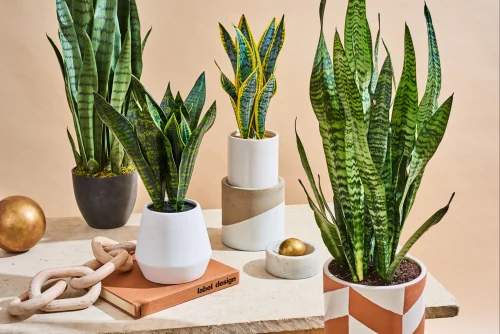
Snake plants are native to West Africa, where they adapted to survive in dry, rocky conditions. Their stiff, upright leaves can store water, making them drought-tolerant and resilient to neglect. There are many varieties, including:
- Sansevieria trifasciata ‘Laurentii’ – Known for green leaves with yellow edges.
- Sansevieria cylindrica – Features cylindrical leaves.
- Sansevieria ‘Moonshine’ – Silver-green leaves with a modern look.
Each variety has its unique appeal, but their care requirements remain largely the same.
2. Light Requirements
One of the reasons snake plants are so popular is their adaptability to different light conditions.
- Bright, indirect light: Ideal for growth and maintaining vibrant leaf color.
- Low light: Snake plants tolerate low-light spaces, such as bedrooms or offices with limited natural sunlight.
- Direct sunlight: While they can handle some direct sun, too much can scorch the leaves.
Tip: Rotate the plant every few weeks so all sides receive even light exposure, preventing lopsided growth.
3. Watering: The Golden Rule
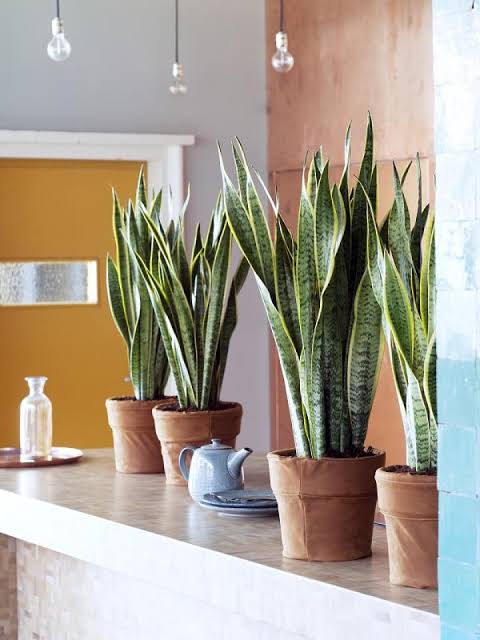
Overwatering is the number one killer of snake plants. Because they store water in their leaves, they need far less frequent watering than other houseplants.
- Spring and Summer: Water once every 2–3 weeks when the top 2 inches of soil are dry.
- Fall and Winter: Water once a month or less, since the plant’s growth slows down.
- Drainage is key: Always use a pot with a drainage hole to prevent root rot.
Pro tip: Stick your finger in the soil to test dryness before watering. If in doubt, wait a few more days.
4. The Right Soil
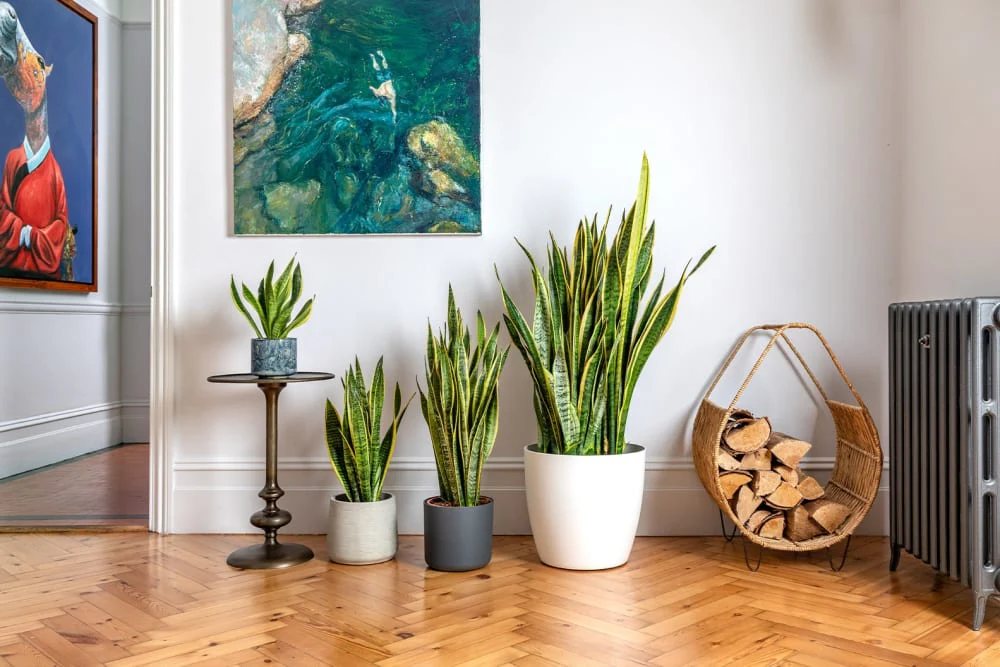
Snake plants thrive in well-draining soil. Standard potting soil retains too much moisture, which can lead to root rot.
Best soil mixes include:
- Cactus or succulent soil mix.
- A blend of regular potting soil with sand or perlite for improved drainage.
This mimics the plant’s natural dry habitat, allowing roots to breathe and preventing water from pooling.
5. Temperature and Humidity
Snake plants prefer warm indoor temperatures between 60–85°F (15–29°C).
- They can tolerate lower temperatures but should never be exposed to below 50°F (10°C).
- Average household humidity is sufficient; they do not require misting.
Keep your snake plant away from drafty windows, heaters, or air conditioners, which may stress the plant.
6. Fertilizing for Growth
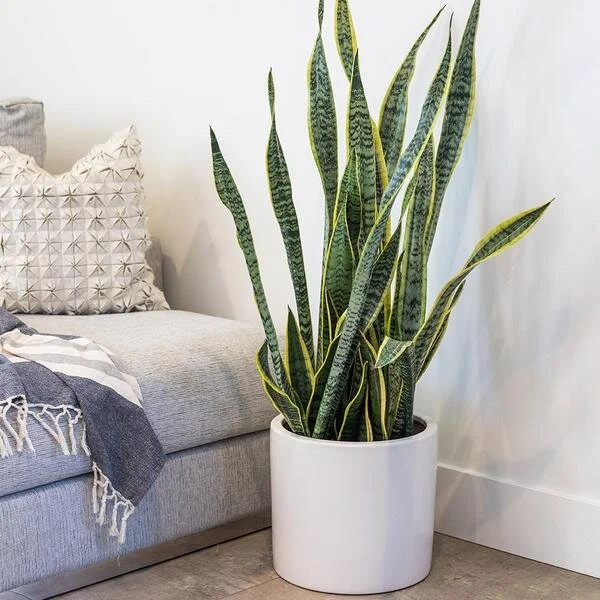
Although snake plants don’t require heavy feeding, a little fertilizer helps them grow strong and vibrant.
- Spring and Summer: Feed with a balanced, diluted houseplant fertilizer once a month.
- Fall and Winter: Stop fertilizing since the plant goes semi-dormant.
Avoid over-fertilizing, which can burn the roots.
7. Repotting Snake Plants
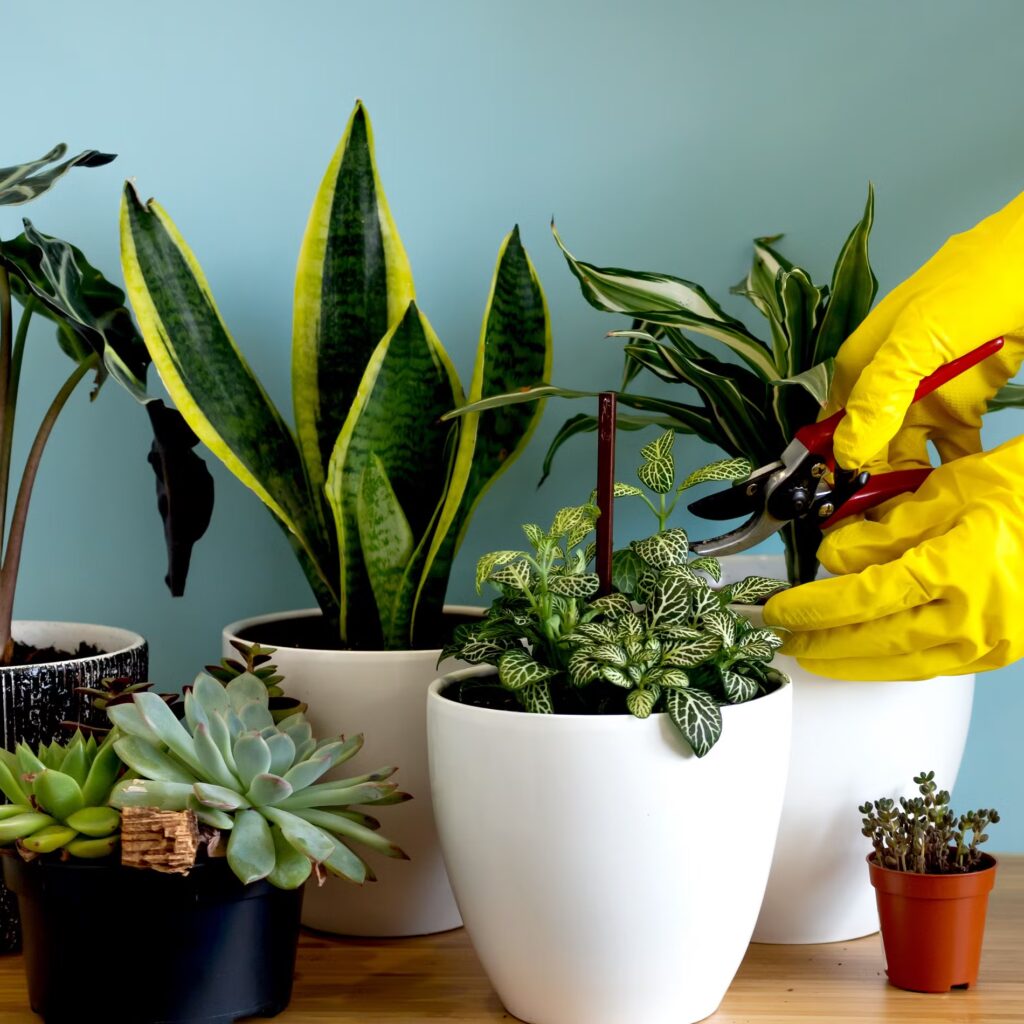
Snake plants grow slowly and don’t need frequent repotting. They actually thrive when slightly root-bound.
- Repot every 2–3 years or when roots start breaking the pot.
- Choose a pot only 1–2 inches larger in diameter than the current one.
- Always repot in fresh, well-draining soil.
Repotting also gives you the opportunity to propagate new plants by dividing rhizomes (underground stems).
8. Pruning and Cleaning
Pruning keeps your snake plant neat and encourages new growth.
- Remove any damaged, yellow, or mushy leaves at the base with sterilized scissors.
- Wipe leaves regularly with a damp cloth to remove dust, allowing the plant to absorb more light.
This not only improves the plant’s health but also makes it more visually appealing.
9. Common Problems and Solutions
While snake plants are tough, they can still face a few issues:
- Yellowing leaves: Often caused by overwatering. Reduce watering and check for root rot.
- Wrinkled leaves: A sign of underwatering. Give the plant a good soak and return to a regular schedule.
- Pests: Rare, but spider mites and mealybugs may appear. Wipe leaves with neem oil or insecticidal soap.
Tip: Always diagnose the problem before making changes—sometimes less is more with snake plants.
10. Snake Plant Benefits
Caring for snake plants is rewarding not just for their beauty but also for their health benefits:
- Air purification: NASA studies show snake plants filter toxins like formaldehyde and benzene.
- Oxygen production: They release oxygen even at night, making them ideal bedroom plants.
- Stress relief: Indoor greenery boosts mood and productivity.
11. Snake Plant Propagation
If you’d like more snake plants around your home, propagation is simple:
- Leaf cuttings in soil: Cut a healthy leaf into sections, let it callus, and plant in soil.
- Water propagation: Place a leaf cutting in water until roots appear, then transfer to soil.
- Division: During repotting, separate rhizomes with roots and plant them in new pots.
Propagation allows you to expand your indoor jungle or share plants with friends.
12. Seasonal Snake Plant Care
Snake plants have different needs depending on the time of year:
- Spring/Summer: Active growth season—more watering, fertilizing, and occasional repotting.
- Fall/Winter: Dormant phase—minimal watering, no fertilizing, and reduced care.
Adjusting care with the seasons helps maintain long-term health.
13. Styling with Snake Plants
Beyond their resilience, snake plants are excellent for interior design:
- Tall varieties make striking floor plants in modern living rooms.
- Compact dwarf types suit desks, shelves, and bedside tables.
- Pair them with stylish pots or plant stands for a modern, minimalistic look.
Their architectural shape makes them blend seamlessly with any décor style, from bohemian to contemporary.
Conclusion
The snake plant is truly the perfect beginner houseplant—it’s tough, versatile, and effortlessly beautiful. By following these care tips—choosing the right light, watering properly, using well-draining soil, and giving occasional fertilizer—you can ensure your plant thrives year-round.
Not only will your snake plant reward you with striking foliage, but it will also purify the air, improve your home environment, and add timeless charm to your décor.
With just a little attention, your snake plant will continue to stay healthy, grow strong, and remain a stunning addition to your indoor garden for years to come.






Leave A Comment